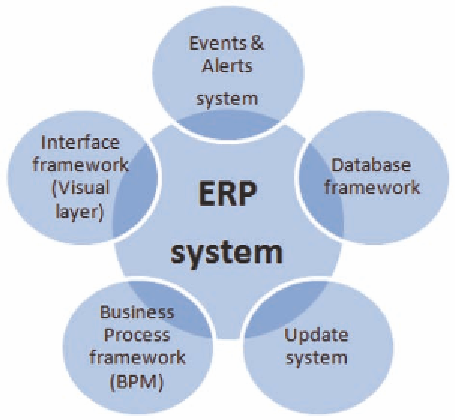Information Technology Reference
In-Depth Information
Figure 2. FME-Functional model for ERP Systems
3rd Level: Low Level customizations
(desired) functionAL
ModeL for erp sYsteMs
This level includes the entire “local” customiza-
tions available for users, in order to enable single
tasks like choosing colours, configuring columns
orders, sending e-mails by a condition, etc. Al-
though not assuming a major importance as in the
previous level, in fact, it promotes some flexibility
on internal processes, making it possible for users
to (easily) enhance their daily procedures.
The ERP Systems on the market have different
approaches to answer to these three levels. Some
of these software solutions seem to forget that the
2
nd
and 3
rd
levels need special attention so that
it is possible to answer effectively to company
requirements.
The ideal scenario would be an ERP system
that could promote a user-friendly configuration
tool (for simple tasks and, when needed, for highly
advanced tasks concerning the parameterization
ability) to conveniently “explore” all capacities of
the 2
nd
and 3
rd
levels. Therefore, in Figure 1, the
arrows represent the desired tendency to expand
configuration capabilities.
It is extremely important that ERP Systems provide
an internal reactive model, regarding the avail-
ability of configuration and parameterization tools,
in order to promote the user's interaction with
the software. The next image (Figure 2) presents
a functional model (called FME) that could be
applied in order to design a complete innovative
and integrated system, with a high level of adapt-
ability and interactivity.
The presented model includes an internal
user-friendly
Event and alert sub-system
to
be used by the “common” user (without techni-
cal knowledge). Some examples of this kind of
sub-system are as follows: the parameterization
to include validations and alert messages so that
it is possible to ensure that the mandatory fields
presented on the screen are filled up; the con-
figuration of the system so that it is possible to
send e-mails after a certain action or condition is
detected. This sub-system enhances the “local”
flexibility for customers, investing in the user's
motivation by solving simple needs. At the same

Search WWH ::

Custom Search